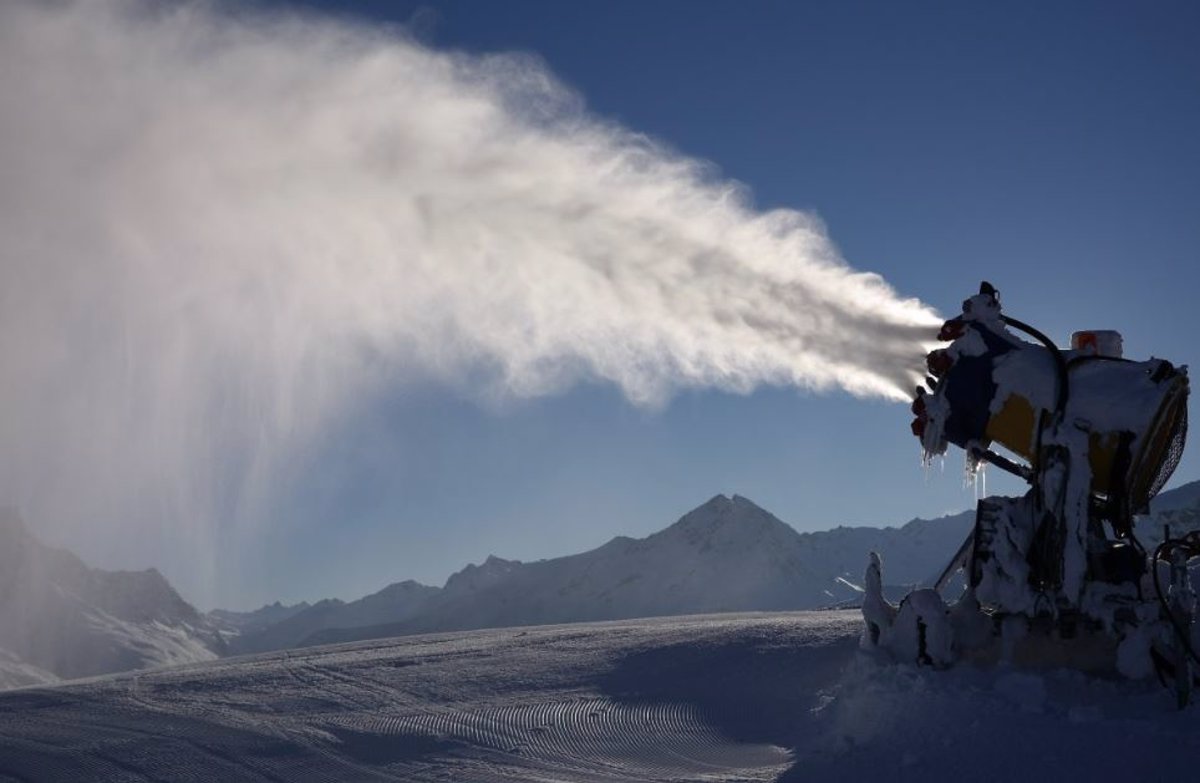Artificial snow cannon – BX here
Madrid, March 21. (European Press) –
A new theoretical model explains how Specific structural details of surfaces They can affect the freezing point of water.
It is generally accepted that the freezing point of water is 0°C. But this is because of the ice core: Impurities present in everyday water raise the freezing point at this temperature.
“Ice nucleation is one of the most common phenomena in the atmosphere,” he says. It's a statement Valeria Molinero, a professor of physical chemistry and materials chemistry at the University of Utah, presented the results of the new study at the spring meeting of the Society for Biochemistry American Chemical Society (ACS).
“In the 1950s and 1960s, there was great interest in ice nucleation for climate control through cloud seeding and for other military purposes. Some studies have looked at how small forms enhance ice nucleation, But the theory had not been developed and no one had done anything quantitative”
When temperatures drop, liquid water molecules, which normally move quickly and pass each other, lose energy and slow down. Once it loses enough energy, it stops, orients itself to avoid repulsions and maximize attraction, and vibrates in place, forming the crystalline lattice of water molecules that we call ice.
When liquid water is completely pure, ice may not form until the temperature drops to -46°C; This is called supercooling. But when even the smallest impurities (soot, bacteria, or even certain proteins) are present in the water, ice crystals can form more easily on surfaces. Resulting in the formation of ice at temperatures above -46 degrees Celsius.
Decades of research have revealed trends about how different surface shapes and structures affect the freezing point of water. In a previous study of the proteins that form ice nuclei inside bacteria, Molinero and his team found that the distances between protein groups can affect the temperature at which ice forms.
“There were very suitable distances for ice formation, and quite the opposite distances.”Molinero says.
Similar trends were observed on other surfaces, but no mathematical explanation was found.
“People used to have a feeling of, ‘Oh, maybe the surface is preventing or enhancing ice nucleation.’” “But there is no way to explain or predict experimentally what they observed.” says Yuqing Qiu, a postdoctoral researcher, who is presenting his work at the meeting. Chiu and Molinero both conducted this research at the University of Utah, although Chiu now works at the University of Chicago.
To address this gap, Molinero, Chiu, and their team combined hundreds of previously reported measurements of how the angles between microscopic protrusions on the surface affect the freezing temperature of water. They then tested the theoretical models using the data. They used models to look at factors that would encourage the formation of ice crystals. Such as the force with which water attaches to surfaces and the angles between structural features.
Ultimately, they determined a mathematical expression that shows that certain angles between surface features make it easier for water molecules to aggregate and crystallize at relatively warmer temperatures. They say their model could help design materials with surfaces that would make ice form more efficiently with minimal energy input. Examples include snow or ice machines, or roofs suitable for cloud seeding, which many Western countries use to increase precipitation. It could also help better explain how small metallic particles in the atmosphere help form clouds through ice nucleation. This could make climate models more effective.
The researchers plan to use this model to return to their studies of proteins that act on ice nucleation in bacteria. More than 200 proteins are thought to be snow nuclease proteins, but not all of their structures are known. The researchers hope to study proteins with solved structures using artificial intelligence tools They will then model how aggregates of these proteins affect ice formation.

“Beer enthusiast. Subtly charming alcohol junkie. Wannabe internet buff. Typical pop culture lover.”


:quality(85)/cloudfront-us-east-1.images.arcpublishing.com/infobae/5HTDSHIH5BDTZLUGYVDHX6BU3Y.jpg)
:quality(85)/cloudfront-us-east-1.images.arcpublishing.com/infobae/VDBB64DKPNCZ3FYGPCB2P6UKOY.png)
:quality(85)/cloudfront-us-east-1.images.arcpublishing.com/infobae/3DRCMMPANVGFRDILCJVDFLVJOA.png)


More Stories
This is how Your Timeline works in Google Maps
This tablet is on sale and has rarely been so cheap
Ryzen 7 8700F and Ryzen 5 8400F listed in the West